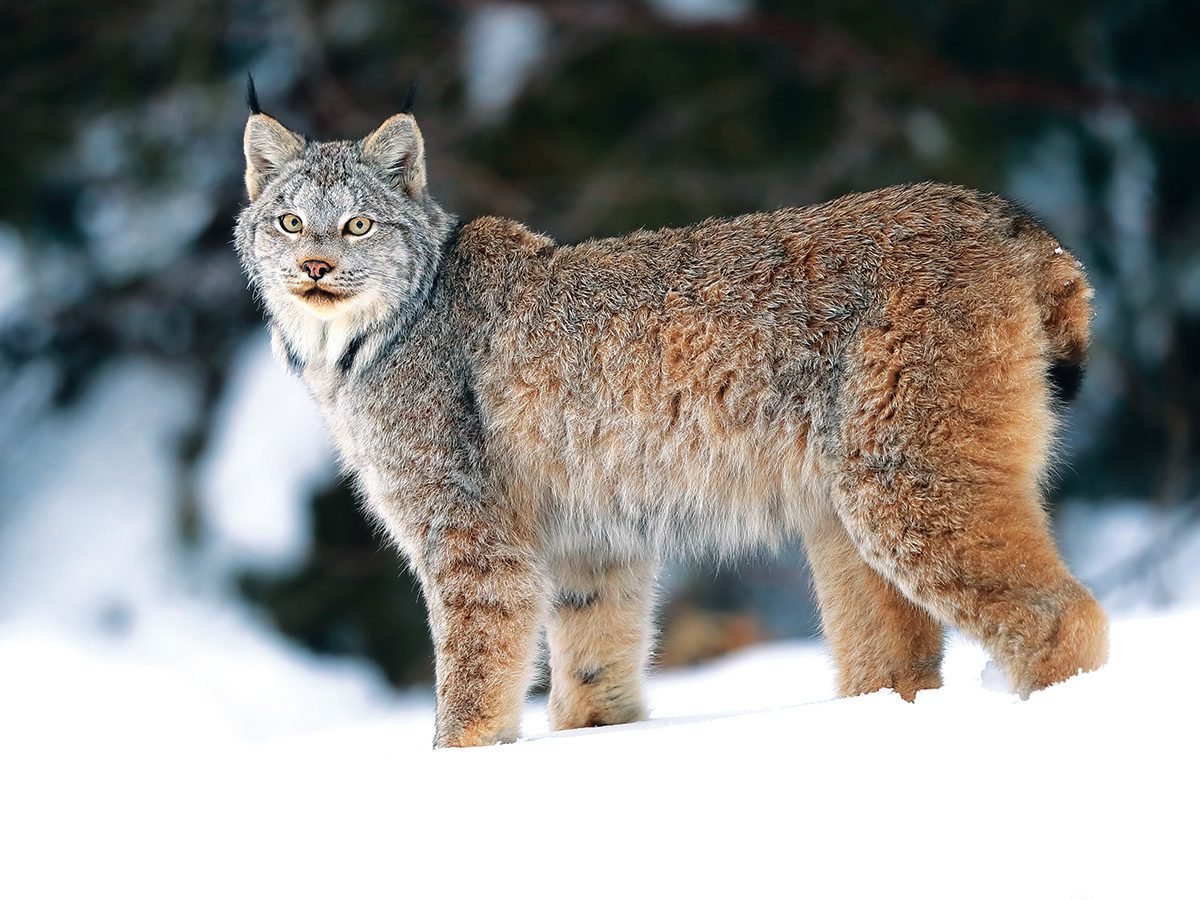
A very special Canada lynx
Canada lynx are said to be elusive and secretive but that hasn’t been my experience. Every now and then, you come across an animal that doesn’t follow the expected behaviour of their species, and appears to seek human company from certain individuals. I’m not referring to habituated animals that have learned to beg for food, or ones that live in a campground and are comfortable around any person they see. Some animals appear to develop a bond with a chosen person or people while avoiding others. I can’t explain this behaviour, but I’m lucky to have experienced it.
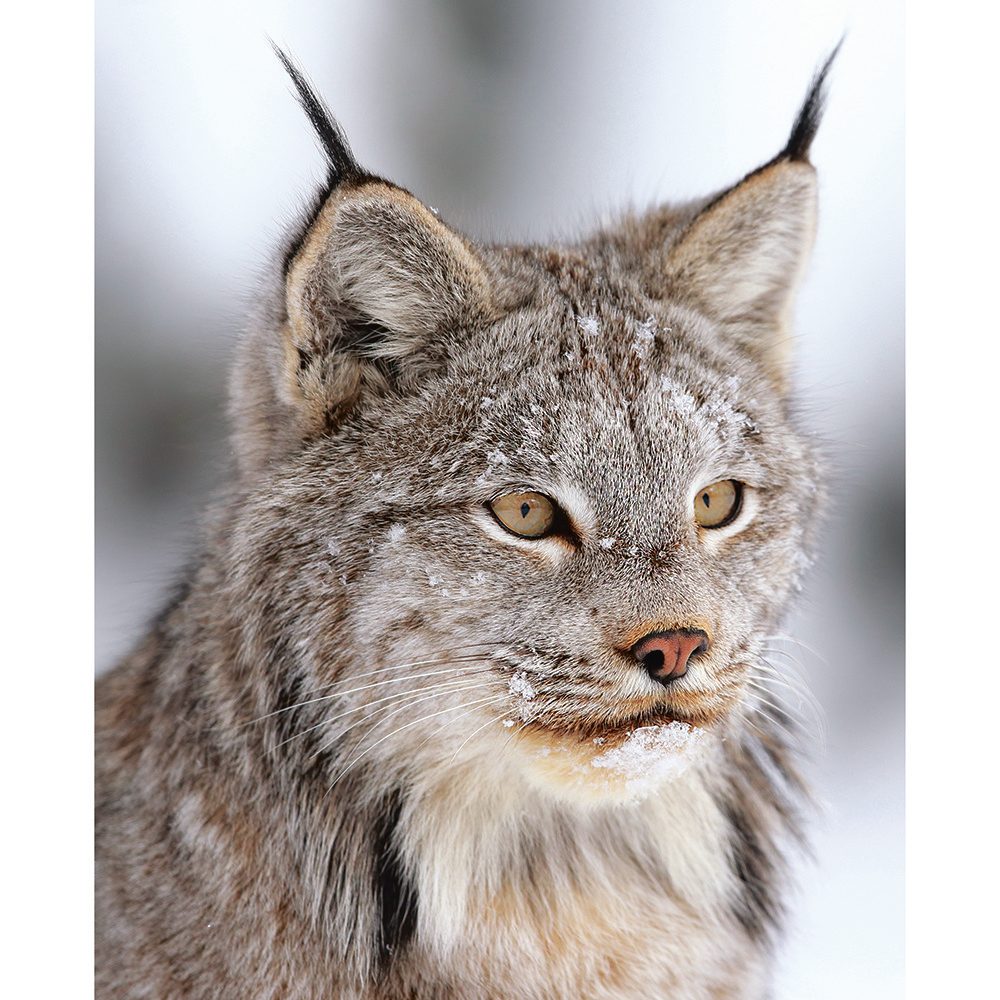
A once-in-a-lifetime opportunity
In March 2018, just before leaving for a trip, I received a message from a friend who lives in northern Ontario. He said he and his wife had a female lynx visiting their property. They kindly invited me to stay but unfortunately the timing was all wrong with my upcoming trip to Florida. I was so disappointed that I was going to miss this once-in-a-lifetime opportunity to see a wild lynx in Ontario. When I returned home on March 18, I was surprised to get another message informing me that the lynx was still making regular visits. I dropped everything, packed my bags—again—and was out the door by 4 a.m. the next morning, hopeful the lynx would still be there when I arrived.
Take a look at these wildlife photos from Rattray Marsh Conservation Area.
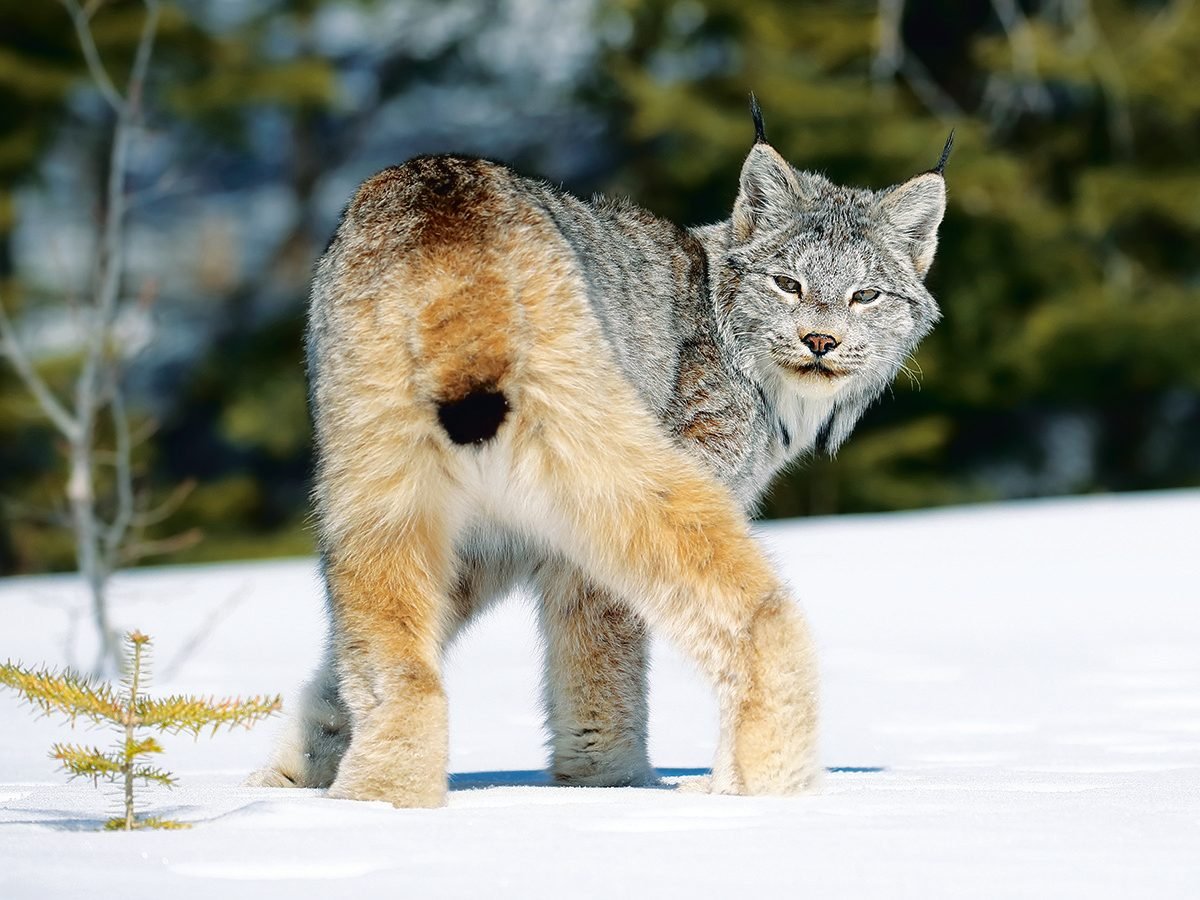
My first encounter with a Canada lynx
It was a long drive, but after a few wrong turns, I finally made it and saw my friend on the driveway. As I got out of the car, he gestured towards a nearby snowbank and there she was, sitting and watching me closely but without any fear. I stood frozen in place, worried that I would spook her. I just watched her for a few minutes, and when the shock wore off, I realized this might be my only time seeing a Canada lynx up close. I pulled my camera from the car and started taking photos. She stayed until dusk and then wandered into the dense forest and disappeared into the night.
These incredible images of the wildlife of the Laurentians were captured from a kayak!
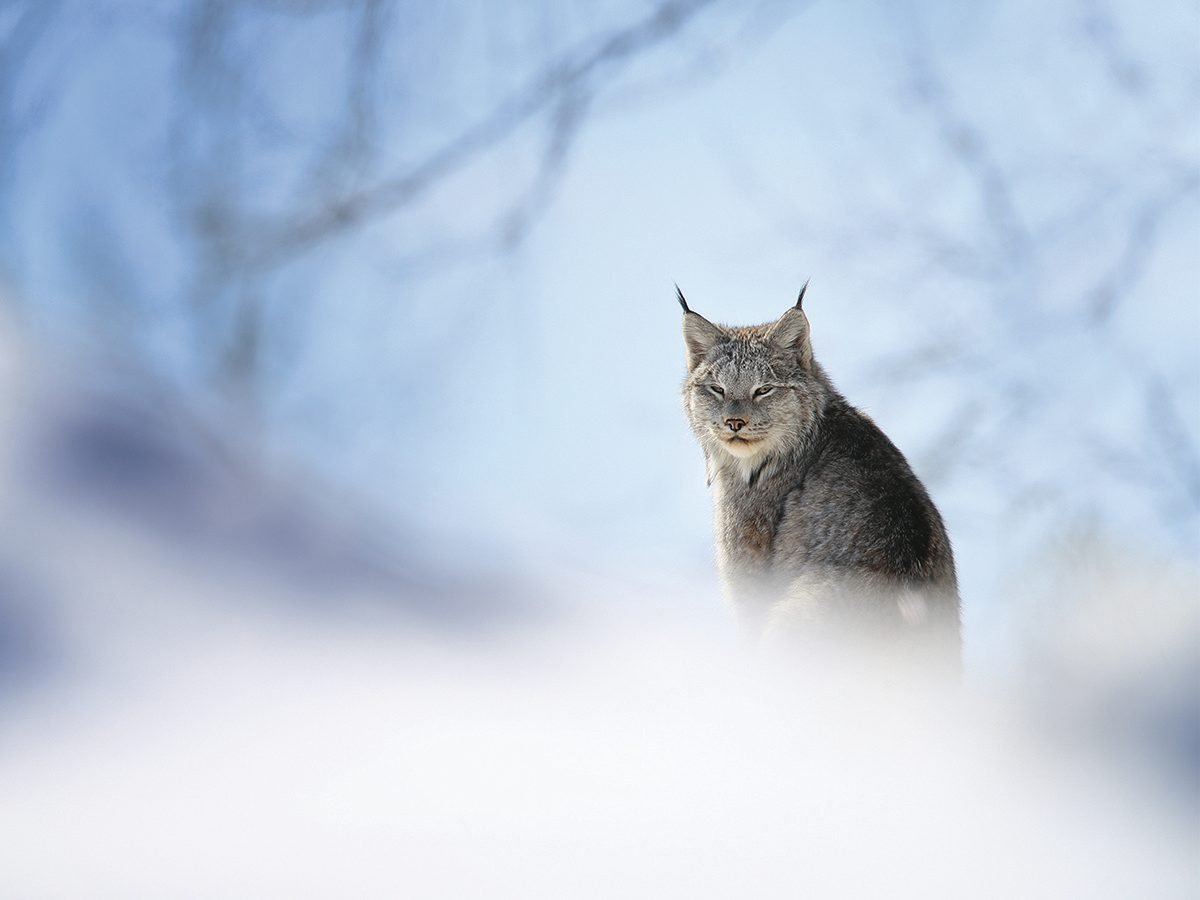
Establishing a routine
The next morning, I looked out my bedroom window and saw her curled up, sleeping on a dug-out bed she’d made in the snow. She stayed for a few hours, disappeared for a while and came back in the afternoon to sit under the bird feeder, waiting for unsuspecting birds and squirrels. This almost daily routine lasted for weeks and I had many chances on my visits to photograph her. She became accustomed to my presence and I kept my distance, allowing her to choose a comfortable proximity. I decided that I would never follow her into the woods because when she was ready to leave, I wanted her to be able to do so without feeling pursued. This was a hard decision as I would have loved to see where she went and have a chance to photograph her in different settings, but it was important that she trusted me and felt safe.
I spent many hours watching her sleep when the only movement was an occasional stretch or flick of her ear. Still, it was time well spent. Occasionally, I was able to watch her hunt, groom herself or walk around areas bordering the forest.
Don’t miss these great Canadian bird stories.
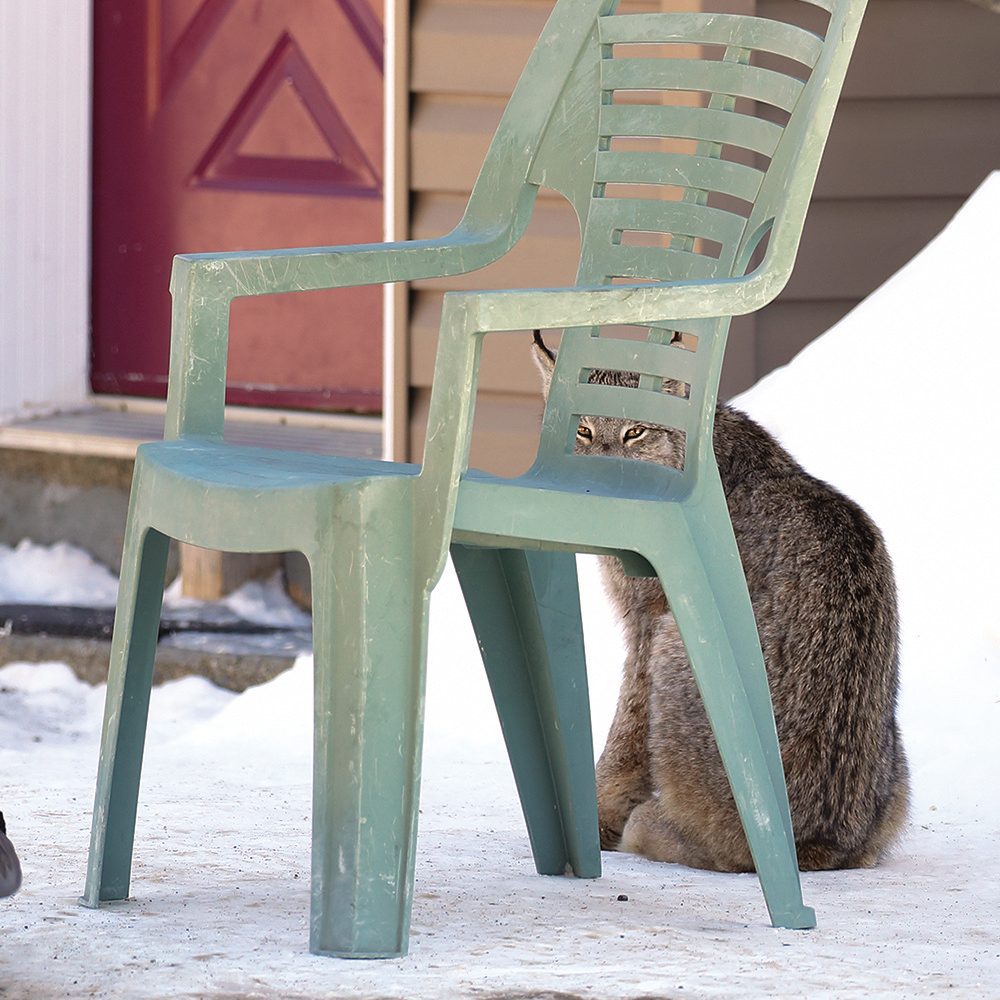
That’s my chair!
One day, I was sitting on a chair just outside the house watching her sleep. Late in the morning she left, so I decided to walk some of the local trails and explore the area. I started my walk and saw lynx prints in the snow and then she appeared ahead of me. She started walking towards me but stopped when she heard someone else approaching. She veered off the trail and into the forest, so I continued my walk. After a few hours I went back to the house to find her sitting under my chair.
Check out this amazing wildlife photography from Prince Albert National Park.
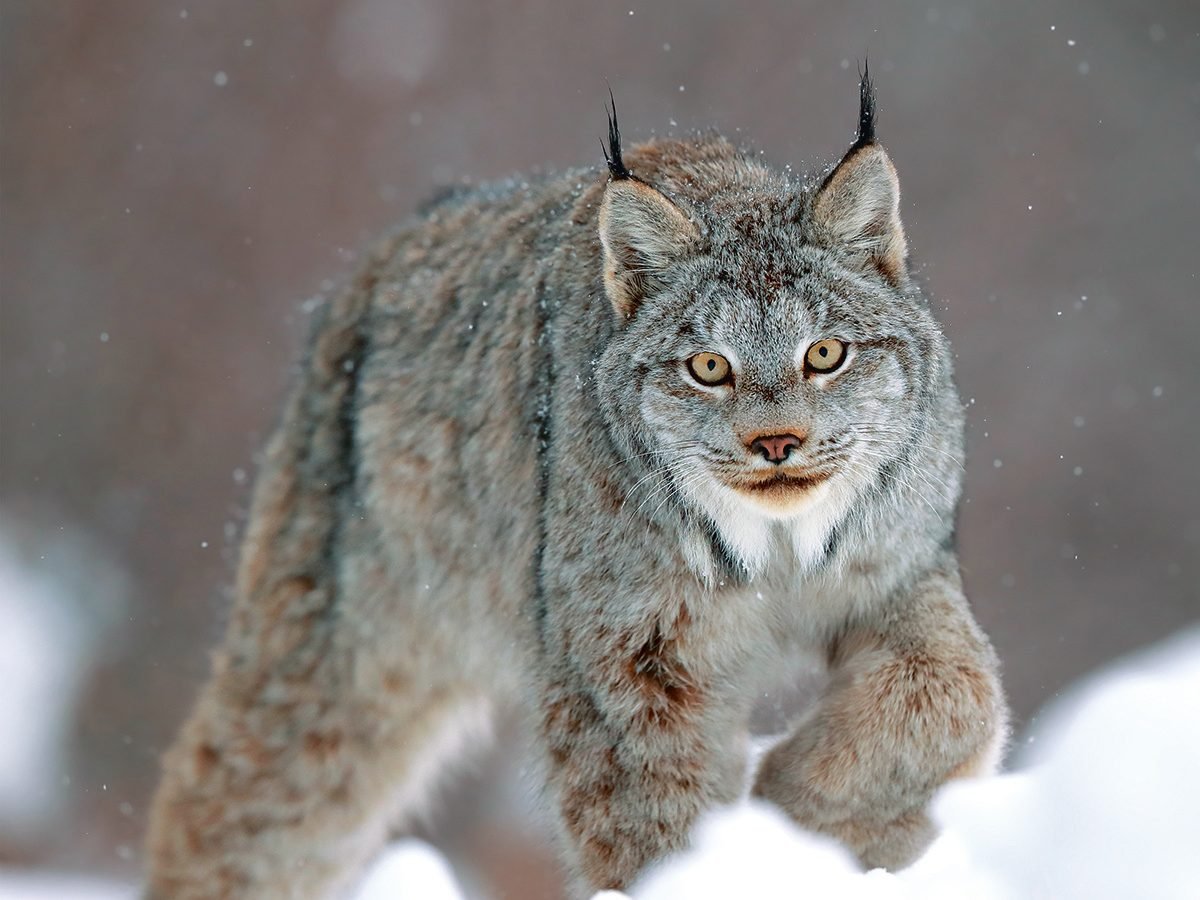
Bidding farewell
What’s even better than seeing one Canada lynx in the wild? Seeing two! On March 22, I saw a different lynx on the driveway. The newcomer left very quickly, obviously not comfortable with my presence. The next day, I was watching the first lynx sleep when I saw movement in the bush. The other lynx came out into the open and walked up and sniffed the first. At this point, I was sure the original lynx was a female and the new one was a visiting male. She raised her head but didn’t get up and the male lynx gave up and walked away. The sounds of them calling to each other were haunting and beautiful and could be heard often.
I visited frequently over the winter and last saw the female in early May. There had been the sound of lynx screaming the night before—previously, I’d only heard those sounds in online videos. It’s purely a guess but I think yet another male lynx was in the area and drove the pair away. It was hard knowing that my time with her was over and I never expected to be that lucky again. It was impossible not to worry about her safety after spending so much time with her and due to the special bond we seemed to share. I felt grateful for the time I’d had, but it led to a feeling of loss when she left.
Find out what it’s like photographing birds in the dead of winter.
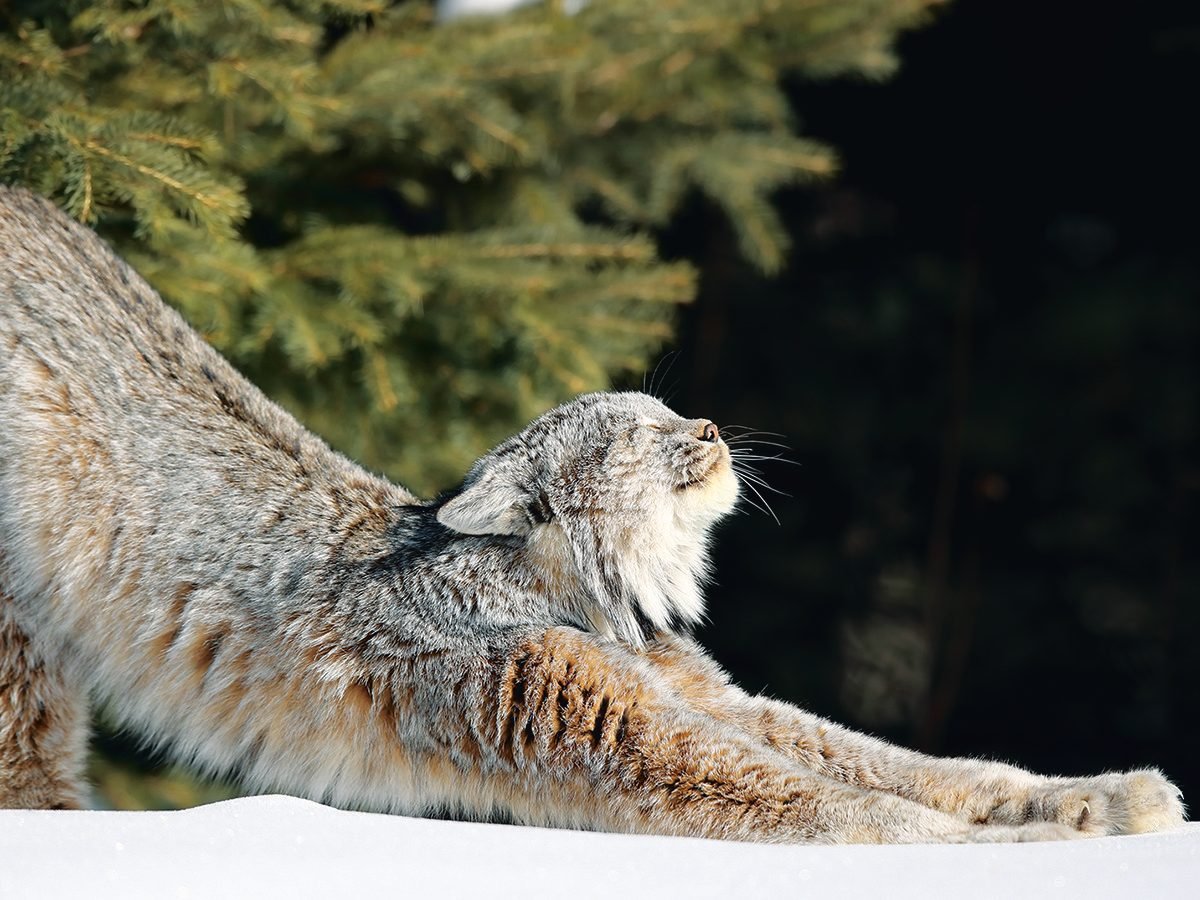
A return to Canada lynx country
After Christmas in 2018, I received another text from my friend telling me that the female was back, much earlier than the previous winter. How could I be this lucky? This time she visited for more than four months and much of my winter was spent up there, eagerly anticipating her visits. Sometimes she’d be gone for a few days but more often than not she’d be in one of her favourite spots when I woke up each morning. It felt as if I was never home but I was exactly where I wanted to be, enjoying the company of my friends and this very special lynx; exploring the outdoors and enjoying every minute, including the intense snowstorms and temperatures that occasionally hit -50°C with the wind chill! It was the experience of a lifetime and included moments I will always treasure.
Next, explore this gallery of the best Canadian bird photography.